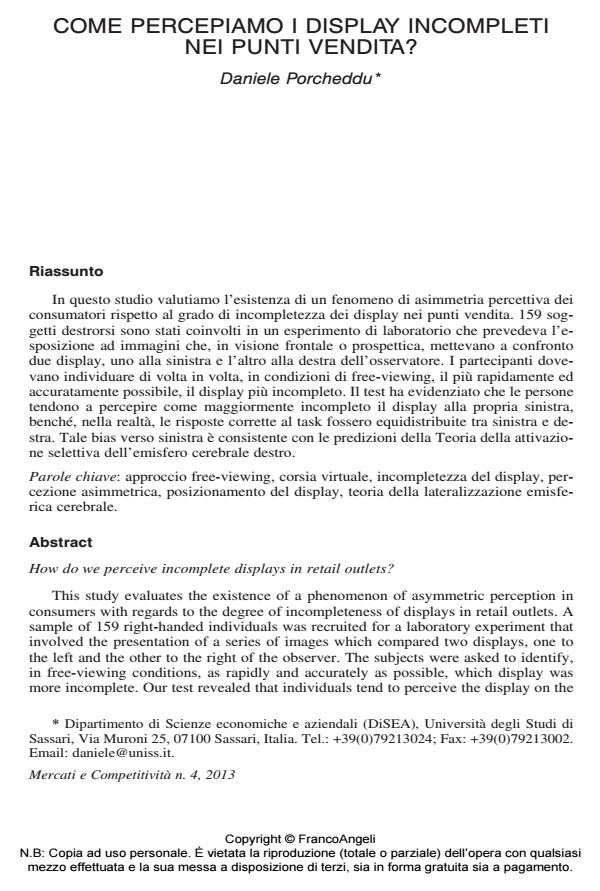How do we perceive incomplete displays in retail outlets?
Journal title MERCATI E COMPETITIVITÀ
Author/s Daniele Porcheddu
Publishing Year 2013 Issue 2013/4
Language Italian Pages 23 P. 59-81 File size 973 KB
DOI 10.3280/MC2013-004004
DOI is like a bar code for intellectual property: to have more infomation
click here
Below, you can see the article first page
If you want to buy this article in PDF format, you can do it, following the instructions to buy download credits

FrancoAngeli is member of Publishers International Linking Association, Inc (PILA), a not-for-profit association which run the CrossRef service enabling links to and from online scholarly content.
This study evaluates the existence of a phenomenon of asymmetric perception in consumers with regards to the degree of incompleteness of displays in retail outlets. A sample of 159 right-handed individuals was recruited for a laboratory experiment that involved the presentation of a series of images which compared two displays, one to the left and the other to the right of the observer. The subjects were asked to identify, in free-viewing conditions, as rapidly and accurately as possible, which display was more incomplete. Our test revealed that individuals tend to perceive the display on the left to be more incomplete, even though the correct answers to the task were actually distributed in an equal manner between left and right. This bias towards the left, that occurred independently of the modality of presentation of the displays, is consistent with the predictions of the Theory of selective activation of the right hemisphere of the brain.
Keywords: Asymmetric perception, brain laterality Theory, display incompleteness, free-viewing approach; positioning of display, virtual aisle.
Jel codes: M31
- Converting Shelf-Based Scarcity into Innovation by Adopting Customer-Focused Innovation Approach Antonio Usai, Daniele Porcheddu, Veronica Scuotto, Jean-Paul Susini, in Journal of the Knowledge Economy /2020 pp.70
DOI: 10.1007/s13132-018-0536-y
Daniele Porcheddu, Come percepiamo i display incompleti nei punti vendita? in "MERCATI E COMPETITIVITÀ" 4/2013, pp 59-81, DOI: 10.3280/MC2013-004004